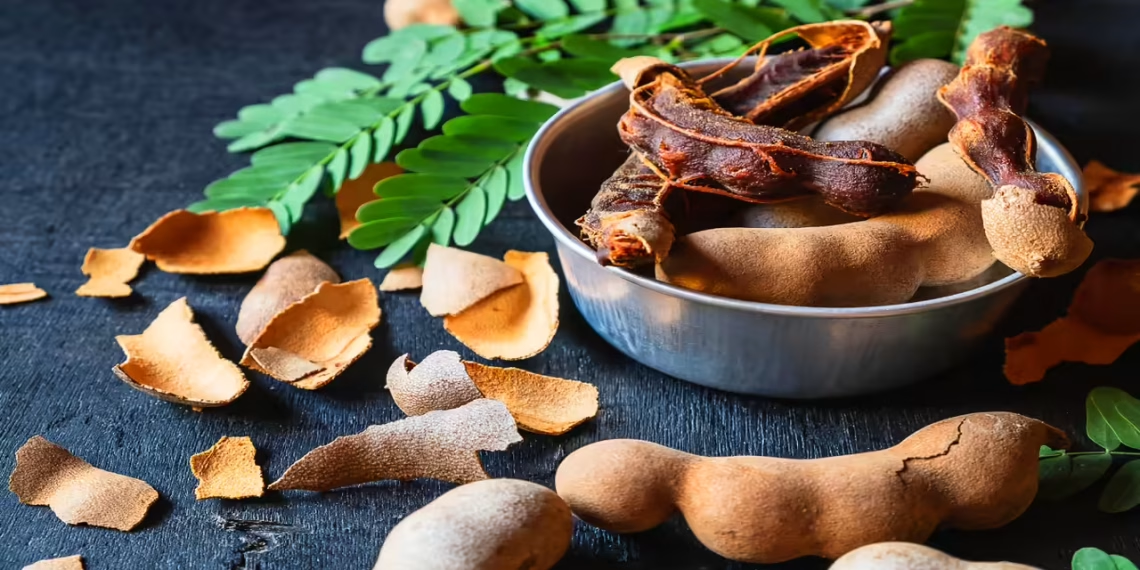Microplastics are now found in human blood, lungs, and even the placenta, raising global health concerns about long-term exposure to these invisible pollutants. But new scientific research offers a glimmer of hope. Scientists have discovered that tamarind, a tangy tropical fruit widely used in South Asian and African cuisines, may help the human body flush out microplastic particles naturally.
According to the study, certain compounds found in tamarind pulp and extract bind to microplastic fragments, allowing the body to excrete them safely through the digestive system. The mechanism works much like dietary fiber, trapping foreign particles and preventing them from accumulating in tissues or organs.
While the research is still at the laboratory stage, the findings suggest a low-cost, natural, and accessible strategy for addressing one of the most alarming public health issues of the 21st century.
Tamarind’s detox potential
Tamarind flush microplastics findings were made after researchers simulated digestive conditions and observed how tamarind compounds interacted with plastic nanoparticles. They found that polyphenols, tartaric acid, and natural fibers in tamarind could attract and bind to microplastics, forming complexes that the body could pass through stool.
This could represent a major breakthrough in dietary detox science. With microplastics entering the body through food, air, and water, having a natural cleansing aid could significantly reduce the long-term toxic load people face daily.
Historically, tamarind has been used as a traditional digestive aid in Ayurveda and African folk medicine. It’s known for improving bile function, aiding metabolism, and reducing heavy metal absorption. These traditional uses, combined with modern data, reinforce the idea that tamarind might play a powerful role in environmental detoxification.
Growing global health concerns
Microplastics—particles smaller than 5 millimeters—have been detected in everything from bottled water and seafood to vegetables and table salt. Recent studies have confirmed their presence in human organs, bloodstreams, and even placental tissue, raising fears about chronic inflammation, hormonal disruption, and cellular damage.
Experts warn that constant exposure to these particles could affect fertility, immunity, and cardiovascular health. As governments struggle to regulate plastic pollution, scientists are now exploring biological countermeasures, such as dietary interventions and probiotic supplements.
The tamarind flush microplastics discovery could mark a turning point, offering people a proactive way to reduce internal contamination while broader environmental solutions catch up.
What comes next
Although results are promising, researchers emphasize that the tamarind findings are preliminary. Human clinical trials are needed to confirm whether eating tamarind or its extracts can achieve the same cleansing effect observed in lab models.
If confirmed, tamarind could be developed into functional foods, beverages, or dietary supplements aimed at microplastic detoxification. Nutritionists also suggest pairing tamarind with other natural binders such as chlorella, activated charcoal, or psyllium husk to enhance elimination efficiency.
For now, experts recommend consuming tamarind in its natural form—as pulp, juice, or spice—as part of a balanced, plant-rich diet.
The bigger picture
Microplastic contamination is an inevitable byproduct of modern life, but science is showing that nature might hold the antidote. The discovery that tamarind compounds can help flush out these pollutants reminds us of the body’s resilience and the healing power of traditional foods.
If future trials validate this approach, tamarind could become a global symbol of clean living—a simple fruit offering a defense against one of humanity’s most pervasive environmental threats.
#Microplastics #TamarindBenefits #NaturalDetox #CleanLiving #FutureMedicine














